South America Motorcycle Tours
MotoQuest offers a variety of organized South America motorcycle tours. Come ride Brazil, Peru, Bolivia, Argentina or Chile with us and experience a wide range of landscapes, foods and cultures. Experience the Andes at a variety of latitudes throughout South America. See Machu Picchu, Tierra del Fuego, Patagonia, the Atacama Desert, the beaches of Brazil and much, much more. Two wheels + South America = unparalleled adventure. The clock is ticking, and the alarm says get out there and experience a continent full of great food, fun miles and long-lasting smiles!
Motorcycle Landmarks And Attractions In South America
Paraty, Brazil
Paraty, Brazil is a charming coastal town located in the state of Rio de Janeiro. It is known for its well-preserved colonial architecture, cobblestone streets, and beautiful beaches. The town was founded in 1667 and quickly became an important port for exporting gold and precious stones from the nearby mines. Paraty's historical significance is evident in its architecture, with colorful colonial buildings adorned with ornate balconies and windows. The town's historic center is particularly captivating, with its pedestrian-only cobblestone streets allowing visitors to stroll through the past. It's like stepping back in time! In recognition of its cultural and historical value, Paraty has been designated as a UNESCO World Heritage site. This designation highlights the town's efforts to preserve its unique heritage and promote sustainable tourism. Beyond its historical charm, Paraty is surrounded by stunning natural beauty. The town is nestled between the Atlantic Rainforest and the Bay of Ilha Grande, offering a picturesque setting for exploration. There are also nearby islands and beaches that are perfect for relaxation and water activities. Paraty is a popular destination for both domestic and international tourists, who come to enjoy its cultural events, such as the Paraty International Literary Festival, as well as its natural attractions. Whether you're interested in history, architecture, nature, or simply soaking up the laid-back coastal atmosphere, Paraty has something to offer. We stay three nights in Paraty during our Brazil Surf and Turf Explorer.
Tierra del Fuego
Tierra del Fuego in Patagonia is a place of rugged beauty and captivating landscapes. Tierra del Fuego, which translates to "Land of Fire," is an archipelago located at the southernmost tip of South America, shared by both Argentina and Chile. This remote and enchanting region is known for its dramatic scenery, characterized by snow-capped mountains, pristine forests, and vast expanses of untouched wilderness. It is a place where nature reigns supreme, offering a haven for outdoor enthusiasts and adventure seekers. Tierra del Fuego is home to the southernmost city in the world, Ushuaia, which serves as a gateway to the region. Ushuaia is nestled between the Beagle Channel and the Martial Mountains, providing a stunning backdrop for exploration. From here, visitors can embark on various excursions, such as hiking in Tierra del Fuego National Park, cruising along the Beagle Channel, or even venturing to Antarctica. One of the iconic attractions of Tierra del Fuego is the "End of the World" train, also known as the "Ferrocarril Austral Fueguino." This historic narrow-gauge railway takes passengers on a scenic journey through the region's picturesque landscapes, offering glimpses of the area's history and natural beauty. Tierra del Fuego is also known for its rich wildlife. The region is home to diverse species, including penguins, sea lions, and various bird species. Visitors can witness these incredible creatures in their natural habitats, adding to the allure of the area. Whether you're seeking breathtaking landscapes, wildlife encounters, or a sense of adventure, Tierra del Fuego in Patagonia is a destination that promises to leave a lasting impression. It is a place where the raw power of nature meets the spirit of exploration. We cross Tierra del Fuego twice during our Patagonia End of the Earth Adventure.
Mt. Chimborazo, Ecuador
Mt. Chimborazo is a truly majestic and awe-inspiring mountain located in Ecuador. Chimborazo is a stratovolcano and the highest peak in Ecuador, reaching an impressive elevation of 6,268 meters (20,564 feet) above sea level. This magnificent mountain is part of the Andes range and is known for its distinctive conical shape and snow-capped summit. It is a prominent landmark in the region and holds great cultural and historical significance for the people of Ecuador. Chimborazo is surrounded by breathtaking landscapes, including glaciers, high-altitude grasslands, and rocky slopes. The mountain is located within the Chimborazo Wildlife Reserve, which is home to a diverse range of flora and fauna, including unique species adapted to the harsh conditions of the high altitude. For those seeking adventure and mountaineering challenges, Chimborazo offers an exhilarating experience. Climbing to the summit of this majestic peak requires technical skills and proper acclimatization due to the high altitude and challenging terrain. It is a feat that attracts experienced mountaineers from around the world. Beyond its natural beauty, Chimborazo holds cultural significance for the indigenous communities of Ecuador. The mountain is considered sacred and is deeply intertwined with local folklore and traditions. It is believed to be the closest point on Earth to the sun, as the equatorial bulge makes Chimborazo's summit the farthest point from the center of the Earth. Visiting Chimborazo allows you to immerse yourself in the raw power of nature and witness the breathtaking beauty of the Andean highlands. The panoramic views from the summit are truly awe-inspiring, offering a sense of accomplishment and a connection to the natural world. is a truly majestic and awe-inspiring mountain located in Ecuador. Chimborazo is a stratovolcano and the highest peak in Ecuador, reaching an impressive elevation of 6,268 meters (20,564 feet) above sea level. This magnificent mountain is part of the Andes range and is known for its distinctive conical shape and snow-capped summit. It is a prominent landmark in the region and holds great cultural and historical significance for the people of Ecuador. Chimborazo is surrounded by breathtaking landscapes, including glaciers, high-altitude grasslands, and rocky slopes. The mountain is located within the Chimborazo Wildlife Reserve, which is home to a diverse range of flora and fauna, including unique species adapted to the harsh conditions of the high altitude. For those seeking adventure and mountaineering challenges, Chimborazo offers an exhilarating experience. Climbing to the summit of this majestic peak requires technical skills and proper acclimatization due to the high altitude and challenging terrain. It is a feat that attracts experienced mountaineers from around the world. Beyond its natural beauty, Chimborazo holds cultural significance for the indigenous communities of Ecuador. The mountain is considered sacred and is deeply intertwined with local folklore and traditions. It is believed to be the closest point on Earth to the sun, as the equatorial bulge makes Chimborazo's summit the farthest point from the center of the Earth. Visiting Chimborazo allows you to immerse yourself in the raw power of nature and witness the breathtaking beauty of the Andean highlands. The panoramic views from the summit are truly awe-inspiring, offering a sense of accomplishment and a connection to the natural world. We ride right by Mt Chimborazo during our Ecuador Adventure. The road that we run that passes nearest the top of the mountain, is the furthest road from the center of the earth.
The Pan American Highway
The Pan American Highway in South America is a fascinating and extensive road network that stretches across multiple countries in the continent. The Pan American Highway is the longest road in the world, spanning approximately 19,000 miles from Prudhoe Bay in Alaska, USA, all the way down to Ushuaia in Argentina, which is often referred to as the "End of the World." In South America, the Pan American Highway passes through various countries, including Peru, Ecuador, Colombia, Venezuela, Brazil, and many others. It offers a diverse range of landscapes, from the lush Amazon rainforest to the breathtaking Andes Mountains and the vast plains of the Pampas. Traveling along the Pan American Highway in South America allows you to experience the rich cultural heritage, vibrant cities, and stunning natural beauty of the continent. You can encounter different climates, encounter unique wildlife, and explore historical sites and landmarks along the way. However, it's important to note that road conditions and infrastructure can vary in different sections of the Pan American Highway. Some parts may be well-maintained and modern, while others may be more rustic and challenging to navigate. We ride stretches of the Pan American Highway in Peru during our Peru Machu Picchu Adventure and our Peru Coast and Canyons Adventure.
Ouro Preto, Brazil
Ouro Preto in Brazil is a city steeped in history and renowned for its captivating charm. Ouro Preto, which translates to "Black Gold" in English, is located in the state of Minas Gerais. During the 18th century, Ouro Preto was a thriving center of the Brazilian gold rush. The city was founded in 1698 and quickly became a hub for gold mining and trade. Its strategic location in the mountains allowed for the discovery of abundant gold deposits, attracting people from far and wide in search of fortune. The wealth generated from the gold mines led to the construction of magnificent colonial architecture, which still stands today as a testament to Ouro Preto's rich past. The city's historic center is a UNESCO World Heritage site, preserving its architectural treasures and cultural heritage. One of the most iconic landmarks in Ouro Preto is the Church of Saint Francis of Assisi, known for its ornate baroque design and intricate woodwork. The church is a masterpiece of Brazilian colonial architecture and showcases the artistic talent of the period. Another notable site is the Aleijadinho Museum, dedicated to the renowned sculptor and architect, Aleijadinho. His works can be found throughout the city, including the famous Twelve Prophets sculptures at the Sanctuary of Bom Jesus de Matosinhos in nearby Congonhas. Ouro Preto played a significant role in Brazil's struggle for independence. It was in this city that the Inconfidência Mineira, a movement for independence from Portuguese rule, took shape. The movement, led by prominent figures such as Tiradentes, sought to establish a republic in Brazil. However, the rebellion was suppressed, and Tiradentes was executed. Today, Tiradentes is considered a national hero, and his memory is honored in Ouro Preto. Visiting Ouro Preto allows you to immerse yourself in the history and culture of Brazil's colonial past. The cobblestone streets, colorful houses, and well-preserved architecture transport you back in time, offering a glimpse into the golden era of the city. We stay two nights in Ouro Preto during our Brazil Surf and Turf Adventure.
The Nazca Lines in Peru
The Nazca Lines in Peru are truly a fascinating and mysterious sight. The Nazca Lines are a series of ancient geoglyphs etched into the desert floor of the Nazca Desert in southern Peru. These enormous designs, created by removing the reddish-brown iron oxide-coated pebbles to reveal the lighter-colored ground beneath, form various shapes, including animals, plants, and geometric patterns. The Nazca Lines were created by the Nazca culture, which flourished between 200 BCE and 600 CE. The purpose and meaning behind these intricate designs remain a subject of speculation and intrigue. Some theories suggest that they were used for religious or ceremonial purposes, while others propose that they served as an astronomical calendar or even as a way to communicate with deities. What makes the Nazca Lines truly remarkable is their scale and precision. Some of the geoglyphs stretch up to several hundred meters in length and can only be fully appreciated from the air. This has led to many theories about how the Nazca people were able to create such intricate designs without the aid of modern technology. To experience the Nazca Lines, visitors can take a flight in a small aircraft that flies over the desert, providing a bird's-eye view of these enigmatic creations. It's a truly awe-inspiring experience to witness these massive figures and patterns etched into the desert landscape. However, it's important to note that the preservation of the Nazca Lines is of utmost importance. Due to their delicate nature, walking on or touching the lines is strictly prohibited to prevent damage. The Peruvian government and various organizations work diligently to protect and preserve this UNESCO World Heritage site. We spend half a day and one night in Nazca during our Peru Machu Picchu Adventure.
El Tronador, Argentina
El Tronador is a majestic and imposing mountain located in the Andes of Patagonia. El Tronador, which translates to "The Thunderer," is a stratovolcano that straddles the border between Argentina and Chile. Rising to an elevation of approximately 3,491 meters (11,453 feet), El Tronador is one of the highest peaks in the region, commanding attention with its snow-capped summit and rugged beauty. The mountain gets its name from the thunderous sound that can be heard when ice and snow break off from its glaciers and crash down the slopes. El Tronador is surrounded by stunning landscapes, including glaciers, lakes, and dense forests. The mountain is part of the Nahuel Huapi National Park in Argentina and the Vicente Pérez Rosales National Park in Chile, both of which offer opportunities for outdoor activities and exploration. One of the highlights of visiting El Tronador is witnessing its impressive glaciers. The mountain is home to several glaciers, including the Ventisquero Negro and the Alerce Glacier. These icy wonders provide a breathtaking backdrop and are a testament to the power and beauty of nature. For those seeking adventure, El Tronador offers opportunities for hiking and mountaineering. There are various trails and routes that cater to different skill levels, allowing visitors to immerse themselves in the rugged wilderness and experience the thrill of conquering the mountain. Additionally, the surrounding area is dotted with picturesque lakes, such as Lake Mascardi and Lake Puelo, which add to the scenic allure of the region. These lakes provide opportunities for boating, fishing, and simply enjoying the tranquility of nature. El Tronador is a destination that captivates with its grandeur and natural wonders. It is a place where the power of the mountains meets the serenity of the surrounding landscapes. We visit El Tronador during our Northern Patagonia Adventure.
Road of Death in Bolivia
The infamous Road of Death in Bolivia is a treacherous and legendary stretch of road that has earned its ominous reputation. The Road of Death, also known as "Camino de la Muerte" in Spanish, is a narrow and winding mountain road that connects the city of La Paz to the town of Coroico. This road gained its notoriety due to its perilous conditions and the high number of accidents that occurred in the past. The road is carved into the side of the Andes Mountains, with steep cliffs on one side and sheer drops on the other. It is a challenging route to navigate, with hairpin turns, narrow sections, and unpredictable weather conditions. The Road of Death was originally built in the 1930s and served as the main transportation route between La Paz and Coroico. However, due to its dangerous nature, a new and safer road has been constructed to replace it. The old road is now primarily used as a tourist attraction and for adventure activities such as mountain biking. We ride this road during our Bolivia Adventure. Many thrill-seeking adventurers are drawn to the Road of Death for its adrenaline-pumping mountain biking experience. Descending the treacherous road on a bike allows them to witness the stunning scenery while experiencing the thrill of conquering a challenging route. Riding it on a motorcycle is another experience altogether. It is important to note that improvements have been made to the road in recent years to enhance safety. Guardrails and wider sections have been added to certain parts of the route. However, it is still crucial to exercise caution and follow the guidance of experienced professionals when venturing on the Road of Death. While the Road of Death may have a dark and foreboding reputation, it also offers a unique and exhilarating experience for those seeking adventure in Bolivia's rugged landscapes.
Colca Canyon in Peru
Colca Canyon in Peru is a magnificent natural wonder that will surely leave you in awe. Colca Canyon is located in the southern region of Peru, near the city of Arequipa. Colca Canyon is one of the deepest canyons in the world, reaching depths of approximately 3,270 meters (10,725 feet). It is a breathtaking sight to behold, with its steep cliffs, rugged terrain, and the Colca River flowing through its depths. The canyon is known for its dramatic landscapes, including terraced fields, snow-capped peaks, and picturesque villages. One of the main attractions of Colca Canyon is the opportunity to witness the majestic Andean condor in flight. The canyon is home to a significant population of these magnificent birds, and visitors can observe them soaring through the skies, often at close proximity. It is truly a remarkable experience to see these impressive creatures in their natural habitat. For those seeking adventure, Colca Canyon offers various hiking trails that allow you to explore its stunning landscapes. Trekking through the canyon provides an opportunity to immerse yourself in the beauty of the Andean highlands, encounter local wildlife, and visit traditional villages where you can learn about the rich cultural heritage of the region. The Colca Valley, which surrounds the canyon, is also worth exploring. It is dotted with charming villages where you can experience the local way of life, interact with indigenous communities, and witness traditional agricultural practices that have been passed down through generations. Additionally, the region is known for its hot springs, where you can relax and rejuvenate amidst the natural beauty of the surroundings. These thermal baths offer a soothing experience, especially after a day of hiking and exploring. Colca Canyon is a destination that showcases the grandeur of nature and the rich cultural heritage of Peru. It is a place where you can immerse yourself in the beauty of the Andes and create memories that will last a lifetime. We ride to the bottom of Colca Canyon during our Peru Coast and Canyons Adventure.
Machu Picchu in Peru
Machu Picchu is a truly remarkable and mystical place nestled high in the Andes Mountains of Peru. Machu Picchu is an ancient Inca citadel that dates back to the 15th century. This magnificent site is renowned for its breathtaking beauty and architectural marvels. It is believed to have been built as a royal estate for the Inca emperor Pachacuti and served as a center of religious and ceremonial significance. Machu Picchu remained hidden from the outside world for centuries, tucked away amidst the lush green mountains. It was rediscovered in 1911 by the American explorer Hiram Bingham, and since then, it has captivated the hearts and minds of people from all over the world. The site itself is a testament to the incredible engineering skills of the Inca civilization. The precision and craftsmanship of the stone structures, such as the Temple of the Sun and the Intihuatana Stone, are awe-inspiring. The terraces, which were used for agricultural purposes, showcase the Inca's mastery of adapting to the mountainous terrain. The location of Machu Picchu is also remarkable. Situated at an elevation of around 2,430 meters (7,970 feet), it offers breathtaking panoramic views of the surrounding mountains and the Urubamba River below. The mist-shrouded peaks and the sense of tranquility that permeates the site create an almost otherworldly atmosphere. To visit Machu Picchu, one can embark on the famous Inca Trail, a multi-day trek that follows the ancient path used by the Incas. This trek offers a unique opportunity to experience the stunning landscapes and immerse oneself in the history and culture of the region. Alternatively, there are also train and bus options available for those who prefer a less strenuous journey. Once at Machu Picchu, visitors can explore the ruins, learn about the fascinating history, and marvel at the incredible architecture that has stood the test of time. Machu Picchu is not only a UNESCO World Heritage site but also holds the distinction of being one of the New Seven Wonders of the World. It is a place of wonder, mystery, and spiritual significance, drawing travelers from all corners of the globe. We spend a full day at Machu Picchu during our Peru Machu Picchu Adventure.
Inspiration From South America
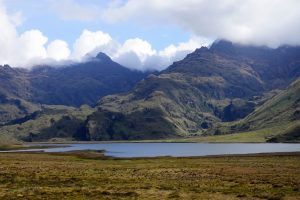
Why Ecuador Should Be On Your List For Adventure!
We often go to our fearless leader Phil Freeman for background and testimonials for many MotoQuest adventures because he’s ridden them countless times and has a passion for
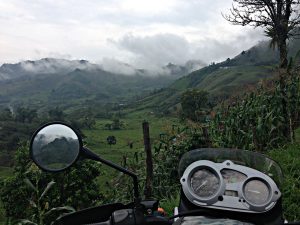
Experience Colombia Like the Locals Do
Experience Colombia Like the Locals Do To put it simply, Colombia is a gem of South America. While it has become infamous for being the
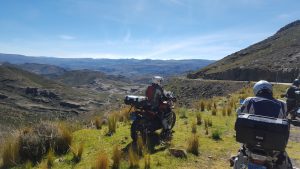
Little Known Facts: Peru Edition
Fact: Peru is home to some of the best paved motorcycle riding in the world.
This may not be news to those of you who have followed us for a while, because we just can’t say enough good things about the paved riding in Peru! For those of you who are newer to the MotoQuest ranks, consider this your first lesson.
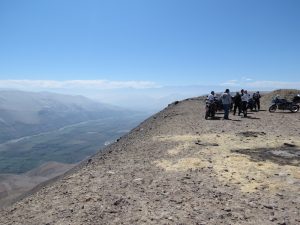
Machu Picchu and 8 Other Places to See in Peru
The first thing that comes to mind when most people think of Peru is Machu Picchu, the ancient Inca citadel perched high in the Andes
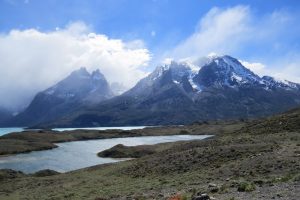
Exploring the Extremes in Patagonia
Patagonia is a place of extremes. A ride through this region means a ride through various environments and landscapes, with dramatic rock formations dotting the
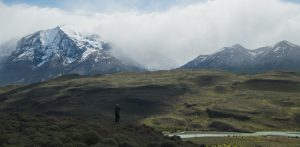
Patagonia “End of the Earth” Adventure
January 27 – February 12, 2019 Imagine a place where you could ride through mountains, deserts, farmland, grasslands and along the coast, all in one








